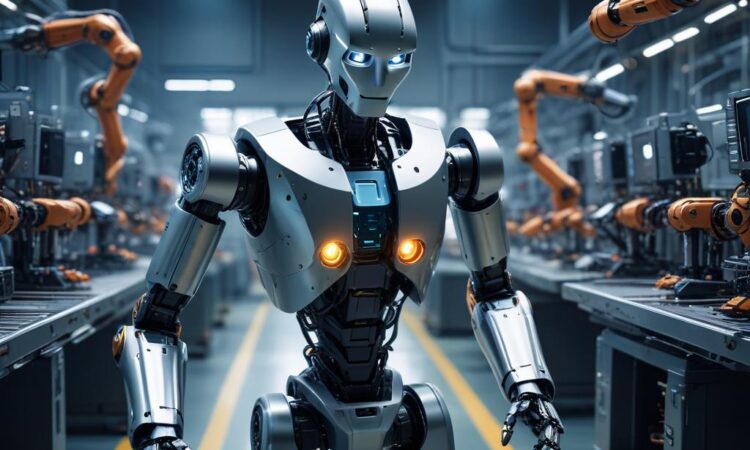Robotics and Automation: Transforming Industries
Robotics and automation are transforming industries and automating tasks, with the potential to improve efficiency, productivity, and safety. From manufacturing and logistics to healthcare and agriculture, robots and automated systems are increasingly being deployed to perform tasks that are dangerous, repetitive, or require high precision.
The Rise of Robotics and Automation
The field of robotics has been steadily advancing for decades, with breakthroughs in artificial intelligence, sensor technology, and computer vision driving significant progress. Automation, on the other hand, has been around for centuries, with the first automated machines dating back to the Industrial Revolution. However, the convergence of these two technologies has led to a new era of automation, where robots are capable of performing complex tasks with minimal human intervention.
Benefits of Robotics and Automation
The adoption of robotics and automation offers numerous benefits, including:
- Increased efficiency and productivity: Robots can work tirelessly without breaks, reducing production times and increasing output.
- Improved quality and consistency: Automated systems are programmed to perform tasks with precision, resulting in higher-quality products and services.
- Enhanced safety: Robots can perform dangerous or hazardous tasks, protecting human workers from potential injury.
- Reduced labor costs: Automation can help businesses reduce reliance on human labor, leading to lower operational costs.
- Increased flexibility and scalability: Robots and automated systems can be easily reprogrammed and redeployed to adapt to changing production needs.
Applications of Robotics and Automation
Robotics and automation are being implemented across a wide range of industries, including:
Manufacturing
- Assembly line automation: Robots are widely used for tasks such as welding, painting, and material handling.
- 3D printing: Automated 3D printers are revolutionizing the manufacturing process, allowing for rapid prototyping and customized production.
- Quality control inspection: Robots equipped with cameras and sensors can inspect products for defects, ensuring high-quality standards.
Logistics
- Warehouse automation: Robots are being used for tasks such as picking, packing, and sorting, optimizing warehouse efficiency.
- Autonomous delivery vehicles: Self-driving trucks and delivery drones are being developed to automate transportation and delivery.
- Automated guided vehicles (AGVs): AGVs move materials and goods around warehouses and factories without human intervention.
Healthcare
- Surgical robots: Robotic arms are used to assist surgeons in minimally invasive procedures, improving accuracy and precision.
- Drug dispensing robots: Automated systems dispense medication accurately and efficiently, reducing human error.
- Rehabilitation robots: Robots are being developed to assist patients with physical therapy and rehabilitation.
Agriculture
- Precision farming: Robots and sensors are used to monitor crop health, optimize irrigation, and apply pesticides precisely.
- Harvesting robots: Automated harvesting machines can pick fruits and vegetables more efficiently and effectively than human workers.
- Livestock management: Robots can assist with feeding, milking, and monitoring livestock, improving efficiency and animal welfare.
Challenges and Concerns
Despite the many benefits, the widespread adoption of robotics and automation also presents challenges and concerns:
- Job displacement: As robots take over tasks previously performed by humans, there is concern about potential job losses.
- Ethical considerations: The use of robots raises ethical questions, such as the impact on human autonomy and responsibility.
- Security risks: Automated systems can be vulnerable to cyberattacks, which could disrupt operations and compromise sensitive data.
- Regulation and safety: Establishing clear regulations and safety standards is crucial for ensuring responsible and safe deployment of robots.
The Future of Robotics and Automation
The future of robotics and automation is bright, with ongoing technological advancements and increasing adoption across industries. As robots become more sophisticated and affordable, they are expected to play an even greater role in our lives, transforming the way we work, live, and interact with the world around us.
The key to harnessing the full potential of robotics and automation lies in addressing the challenges and concerns, ensuring a responsible and ethical approach that benefits both humans and society as a whole.

